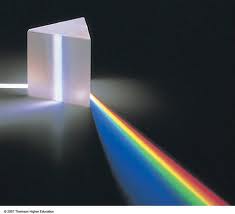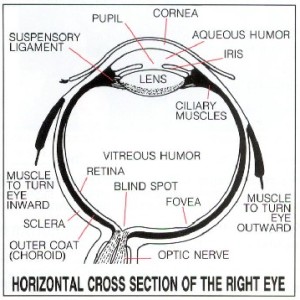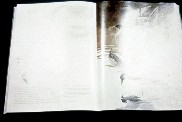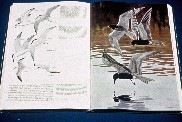Learn About Lighting
By Craig DiLouie, LC
What you need to know:
- The human eye responds with vision to a narrow band of energy: visible white light
- Visible white light is made up of individual color wavelengths
- Eye includes elements for focus by distance, control of incoming light, projecting image
- Rods are responsive to quantity of light, and cones are responsive to detail and color
- Light falls on an object and is reflected to observer, resulting in perception
- Increasing light falling on object generally increases brightness, contrast, visibility
- Other factors include source/object/eye geometry, size, time, movement, color contrast
- Excessive brightness results in glare
Light is a form of radiated energy just like heat and radio waves, but with one important distinction—it is capable of producing a sensation in the human eye we call vision. Visible light resides along the 380-760 nanometer band on the electromagnetic spectrum.

Click to enlarge

The size of the wavelengths determines the color of the light, from violet to red. Put it all together, and you have white light. Shine white light through a prism, and you get a rainbow of individual wavelengths.
The complete visual system consists of the eye and the brain. The eye receives visual information, and passes it on to the brain for processing. The eye includes several important elements that allow it to play its part in vision. These include the pupil, which opens in dim light and closes in bright light; the lens, which bulges to focus on near objects and flattens to focus on far objects; and the cornea, which provides most of the eye’s optical power. The image seen by the eye is projected as an image onto the retina, which absorbs particles of light and converts them into electrical and electrochemical signals.

The retina uses two types of photoreceptors, rods and cones, that help the eye to see light levels as low as full moonlight (0.1 lux) up to levels as high as noon daylight (100,000 lux) and brighter. The rods play their biggest role at night or under extremely low light levels. They have a very high sensitivity to light, but cannot discern detail or color. The cones work during the day and are less sensitive to light, but can see fine detail and color. As light levels decrease, the rods gradually take over from the cones and the eye’s peak luminance sensitivity shifts towards the blue end of the color spectrum. This gives us the Perkinje effect, where a rose appears a rich red against dull green leaves under noon sunlight, and dark red or black with relatively bright leaves at dusk. Under extremely low light levels, such as moonlight, people become virtually color blind.
Light can be reflected, transmitted or absorbed. For the eye to perceive an object, visible light must fall on the object and be reflected (or transmitted) to the eye. Light falling on the object is called illuminance, or light level, and is measured in lux (metric) or footcandles (Imperial). Light reflected or transmitted from the object to the eye (or transmitted directly from the light source to the eye) is luminance, or objective brightness, and is measured in candelas, which express the intensity and direction of light.
The resulting luminance, and contrast in object luminance against its surround, impacts how visible the object is within the context of the angular relationship between it, its observer and the light source. For example, light falling on a glossy magazine (below left) increases the magazine’s luminance to a point where the page appears washed out by light. Simply moving the observer, the magazine or even the light source, can fix the problem (below right).


Additionally, for the human eye to see an object as a certain color, that color must be present both in the object and the light falling on it. An apple is red because its skin is chemically oriented to absorb all color wavelengths except red, which it reflects to the eye. If we were to filter red wavelengths out of the light, the apple would appear gray or black.
Increasing illuminance (light falling on an object) generally increases its luminance (objective brightness), which increases visibility by permitting the eye’s pupil to constrict, producing a clearer image on the retina. This is particularly true for older eyes, which suffer from presbyopia. It also increases luminance contrast.

Excessive luminance, however, can produce a visual sensation we call glare, which can irritate or even disable vision. And constant exposure to extreme luminance contrasts can be visually fatiguing because the eye is forced to constantly adapt to changes in luminance.
Visibility is also impacted by size, movement and time. The visual size of an object is a function of its physical size and distance from the observer. As visual size increases, visibility increases.
This half of this sentence is easier to read
than this half of this sentence.
Movement is related to visibility because it facilitates detection or makes it more difficult. And finally, the length of time a viewer is exposed to an object often determines its visibility.